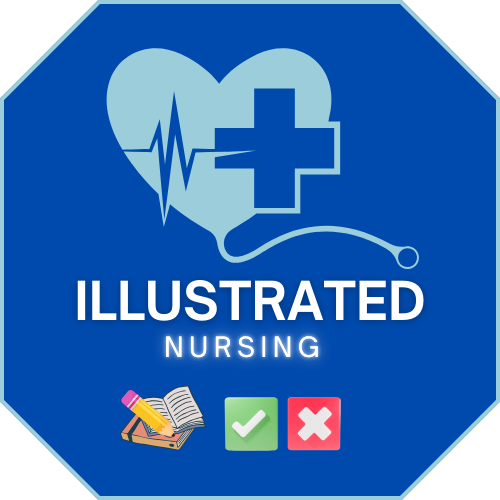Famous Cardiac Knowledge
Famous NCLEX knowledge about Myocardial Infarction and Heart Failure
- Reduce pain and myocardial oxygen demand.
- How? Bedrest and Morphine
- Also, Pain= insufficient oxygen reaching the heart muscle
- Headache common due to vasodilation
- Monitor blood pressure
- Goal: Coronary vasodilation to decrease chest pain.
- Yes, they will ask you. Must be given with an infusion pump and requires frequent BP monitoring
- Give the morphine first is the answer most of the time (EKG, chest x-ray, labs can wait)
- Intended effect:
- Reduce myocardial oxygen consumption
- Treat the chest pain
- Reduce blood pressure and heart rate
- Reduce anxiety and fear.
- Monitor for Confusion (decrease oxygen to brain)
- Urine output (acute kidney failure from decrease blood flow)
- Orthopnea, Dyspnea (pulmonary edema)
- Do not give Metoprolol or any other beta blocker (depresses myocardial contractility)
- Beta blockers only for stable cardiac patients.
- Cardiogenic shock watch for oliguria (low urine output). It’s an expected finding.
- Small, easily digested meals.
- tPA (Alteplase) breaks down (lysis) the clot in blocked coronary arteries.
- Watch for reperfusion cardiac arrhythmias
- Contraindications: Hx of Cerebral hemorrhage
- Fluid-filled alveoli
- Seen in left sided heart failure.
- Troponin
- Myoglobin
- CK-MB
- Did you now that it causes gingival hyperplasia
- Monitor gums daily
- Can cause hyperkalemia
- The -prils Captopril, enalapril, lisinopril
- Coumadin to prevent thrombus formation
- Causes Stasis of blood in the atria (Leading to clots)
- Blurred vision, nausea, headache, weakness, any visual disturbances.
- Think visual disturbances. Yellow spots
- Hypokalemia increases risk of digoxin toxicity.
- You know what digoxin does right? Increases myocardial contractility.
- High fowler’s position
- Best lung expansion
- Decreases venous return to decrease myocardial workload
- Notify your MD if
- Gain 2 or more lbs in a day
- Have to sit upright to sleep
- Become increasing SOB at rest
- Left look for lung symptoms: crackles, dyspnea, orthopnea. Left and Lungs both start with L
- Right look for swelling: peripheral edema, hematomegaly (swollen liver), enlarged spleen (swollen liver), jugular vein distension (swollen jugular)
